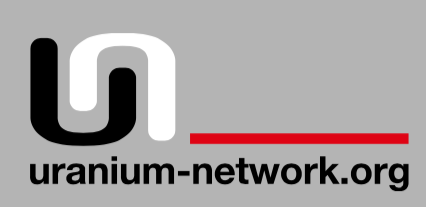By: Liezel Hill
10th February 2009
TORONTO (miningweekly.com) – An agreement on a private placement and offtake pact with a consortium of Japanese firms will not only ensure that Canadian uranium miner Uranium One is well-funded – thanks to a C$270-million cash injection – but will also boost the firm’s strategic positioning, president and CEO Jean Nortier said on Tuesday.
[Source]
Uranium One announced earlier in the day that it will sell a 19,95% stake in itself to a group comprising Tokyo Electric Power Company (Tepco), Toshiba Corporation and the Japan Bank for International Cooperation (JBIC), at C$2,30 a share.
The consortium will also have an offtake option on up to 20% of Uranium One’s available production from assets where it has the right to market output.
Some analysts on Tuesday questioned the timing of the transaction, given that Uranium One was reasonably well funded, with about $185-million in cash resources at the end of January, did not having any near-term debt repayment obligations and recent pressure on the uranium spot price
But Nortier argued that the transaction was not solely about raising funds, as the company expected to realise “strategic benefits” from having strong partners, particularly ones with assets in Kazakhstan, where all of Uranium One’s producing assets are located.
Tepco is Japan’s largest electricity utility, generating over 62 GW, of which some 28% is from nuclear power, while electric and electronic products manufacturer Toshiba owns a 67% stake in Westinghouse, which is the technology provider for about 50% of the world’s nuclear plants.
Tepco and Toshiba also have direct stakes in the Kharasan uranium project, in Kazakhstan, in which Uranium One owns a 30% interest, and JBIC provided a $70-million debt facility to the project’s owners to help fund capital expenditure.
“There are growth opportunities across the globe with these partners; they have market intelligence about the industry that will be very valuable to us as we meet with them to talk strategy,” Nortier said on a conference call.
“Cash was one of the considerations, but the strategic positioning that comes with having these three very prominent groups as part of our shareholder base obviously weighed very heavily in our decision making process as well.”
Nortier also stressed that the company did not expect that the offtake agreement with the consortium would result in margin contraction going forward.
He declined to provide details on the pricing arrangements, but hinted that the prices were “probably better than current analyst estimates”.
Spot uranium prices, which rose to a record $138/lb in mid-2007, fell as low as $45/lb last year. The spot price for the metal was at around $48/lb last week.
Uranium One’s share price has followed the metal downwards, from around C$18,00 in 2007 to below C$1 in October last year.
The company’s stock rose 5,5% after Tuesday’s announcement, to C$2,12 apiece by 12:29 in Toronto.
FREES UP CASH FOR US DEVELOPMENT, ACQUISITIONS
Uranium One owns interests in three mines in Kazakhstan, a 50% stake in the Honeymoon project, in Australia, some assets in the US, and the now-mothballed Dominion mine in South Africa.
The company plans to use the cash raised in the private placement to speed up development at its US assets, as well as potentially to take advantage of acquisition opportunities, Nortier said.
However, the company will only consider buying uranium mining assets at the lower end of the cost curve, and is not looking at anything specific at this point, he added.
In the US, the company expects to begin producing some uranium from its Moor Ranch project, in Wyoming, in late 2010.
The US assets have generally been the first place where the company looks to cut spending, Nortier said.
Thanks to the large investment by the Japanese consortium, “we will be able to develop as aggressively as we believe is possible, and we won’t be reducing or restricting development activities in the US as a result of a shortage of cash”, he continued.
As a result, the group’s production in 2011, 2012 and 2013 may be positively impacted by the intensified efforts on developing the US assets.
Uranium One said in November it expects to produce 3,5-million pounds of uranium in 2009, comprising 1,8-million pounds from the Akdala mine, in Kazakhstan, 1,5-million pounds from South Inkai and 0,2-million pounds from Kharasan.
Production in 2010 is forecast at 5,6-million pounds.
